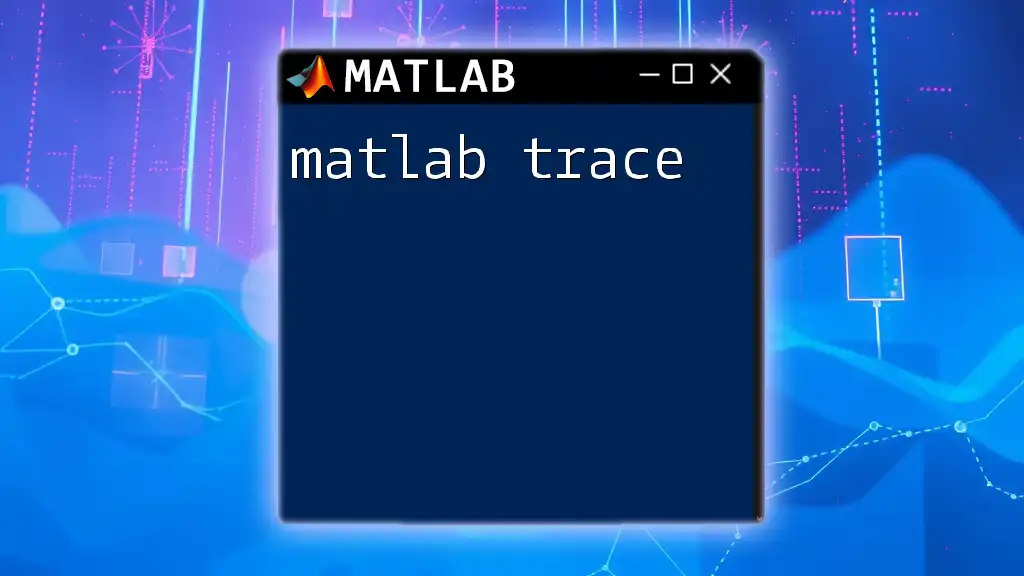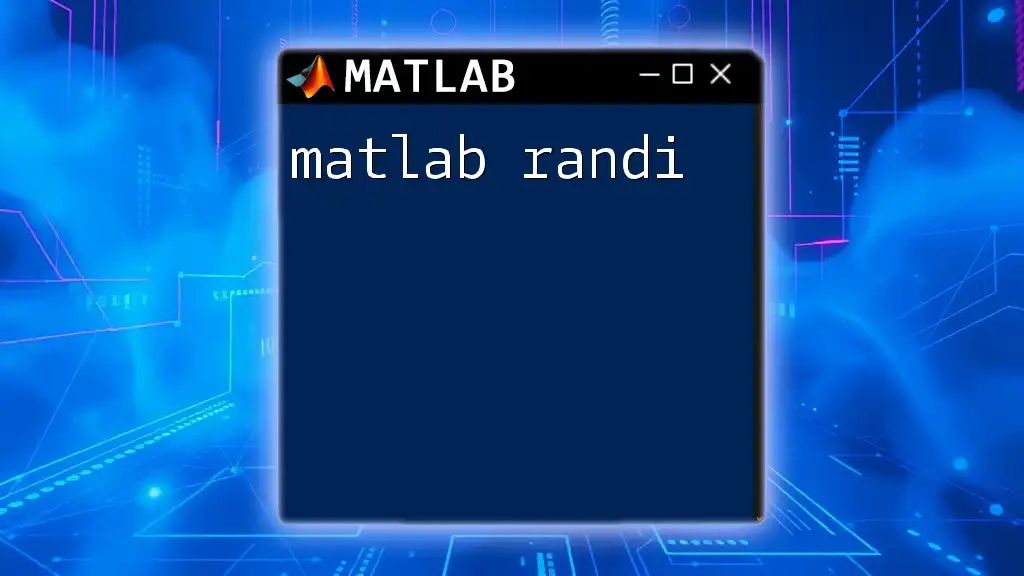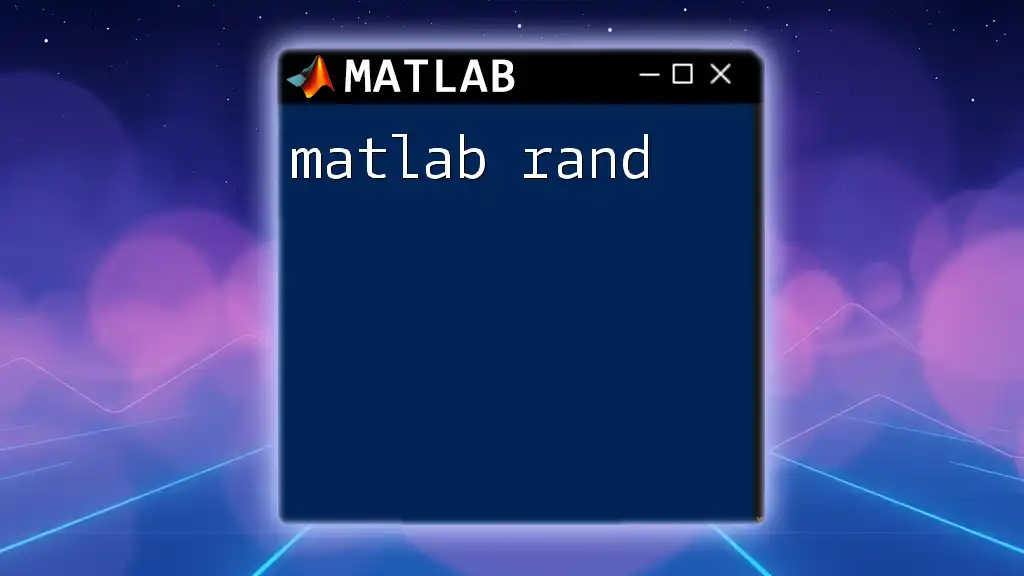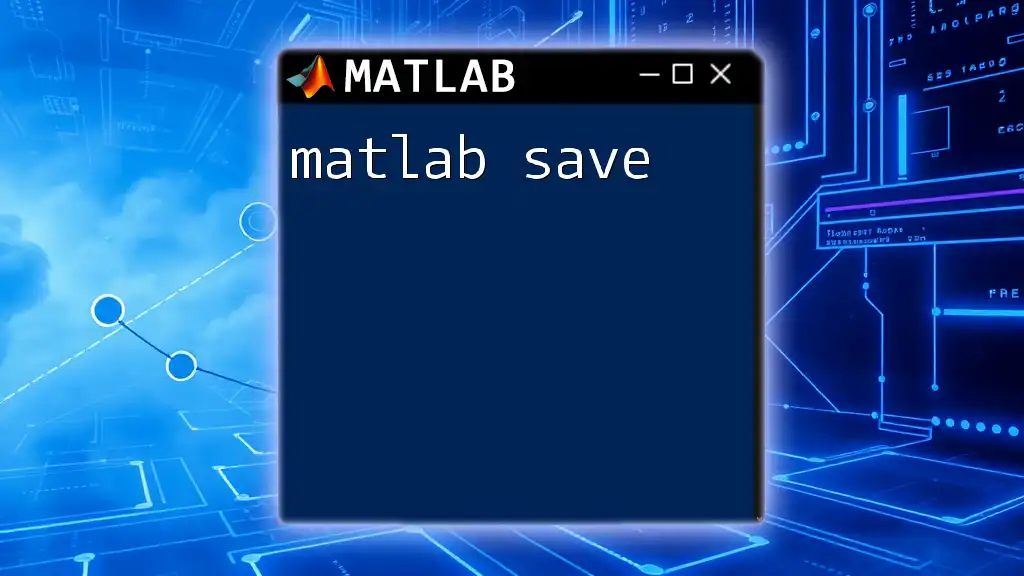The MATLAB `trace` function computes the sum of the elements along the main diagonal of a square matrix, which can be useful in various mathematical analyses.
Here’s a code snippet demonstrating how to use the `trace` function:
A = [1 2 3; 4 5 6; 7 8 9];
result = trace(A);
disp(result); % Displays the trace of matrix A
Understanding MATLAB Trace
What is MATLAB Trace?
MATLAB trace refers to a powerful debugging tool that helps developers monitor the execution of their code, allowing for effective tracking of function calls and identifying errors. In the realm of programming, tracing is crucial for understanding the flow of control and data, particularly when dealing with complex algorithms or large datasets. By utilizing MATLAB trace, programmers can enhance code quality, streamline debugging processes, and pinpoint performance issues.
How to Use MATLAB Trace
Basic Trace Commands
To begin tracing in MATLAB, developers can use the basic trace command, which enables users to log function calls. This command records the execution path, allowing you to see which functions are invoked at runtime.
Here’s a simple example of how to implement tracing with a function:
function trace_example()
trace('function_name');
% Simulating some operations
a = 5;
b = 10;
c = add(a, b);
end
function result = add(x, y)
result = x + y;
end
In this example, when `trace_example()` is called, it will log the execution of `function_name`, helping you understand which functions are being executed.
Advanced Tracing Techniques
Using `dbstop` for Debugging
Another powerful feature for effective debugging in MATLAB is the `dbstop` command. This command allows you to set breakpoints that pause the execution of code, facilitating a deeper inspection of variable values and execution flow at specific points.
The syntax for setting a breakpoint is straightforward:
dbstop if error
When this command is invoked, MATLAB will stop execution if an error occurs, giving you the chance to investigate the state of your variables for troubleshooting.
For instance, you can set breakpoints in the following way:
function error_prone_function()
dbstop if error; % Set a breakpoint on error
% Some code that may cause an error
result = risky_operation();
end
This way, if `risky_operation()` fails, you can examine the variables leading up to that error before continuing the execution.
Leveraging the `eval` Function for Advanced Tracing
In conjunction with tracing, the `eval` function can be employed to execute dynamically generated commands during execution. This can be particularly useful for adding trace statements within a loop or conditional statements.
For example, you might want to conditionally log the value of a variable:
function conditional_trace(variable)
if variable > 10
eval('disp("Variable exceeds threshold");');
end
end
Through this technique, you can embed tracing messages that dynamically adapt to the values within your program logic.
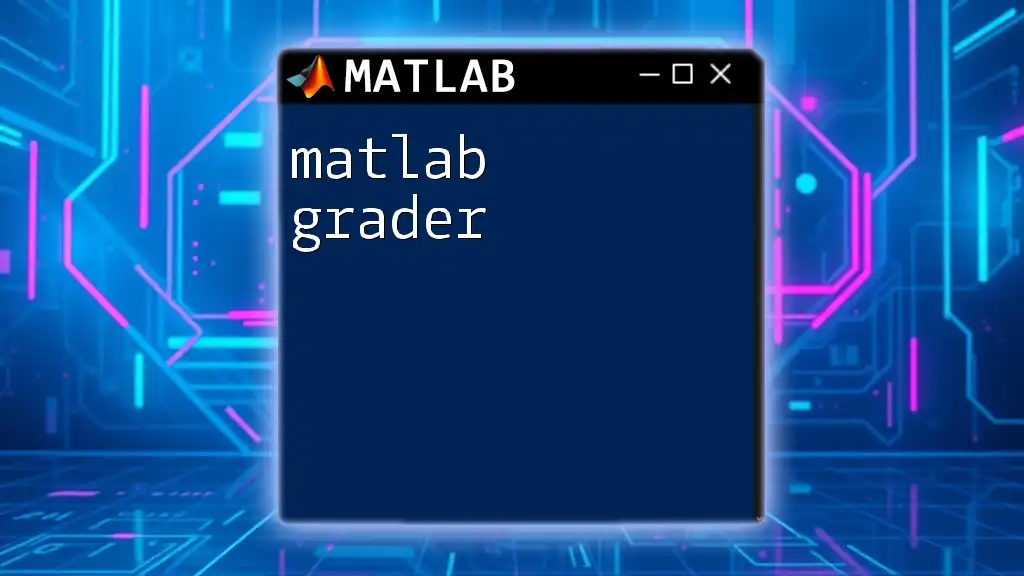
Practical Applications of MATLAB Trace
Debugging with MATLAB Trace
Utilizing MATLAB trace effectively leads to significant improvements in debugging practices. Real-world case studies showcase its application—such as resolving infinite loops or incorrect outputs due to logical errors. By analyzing the trace logs, developers can easily identify the problematic sections of their code, trace those functions back, and implement fixes.
For example, if a function does not return the expected result, tracing can reveal where the function diverges from its intended operation.
Performance Monitoring with Trace
Tracing also helps in monitoring the performance of MATLAB applications. It allows users to observe the execution time of functions and identify bottlenecks. To achieve this, we can combine the `tic` and `toc` functions for timing execution:
tic; % Start measuring time
result = compute_heavy_task();
toc; % End timing and display elapsed time
This snippet enables a clear assessment of how long a given function takes to execute, thus guiding performance optimization efforts.

Best Practices for Effective Use of MATLAB Trace
Structuring Code for Better Traceability
To optimize tracing, it’s essential to structure your code effectively. By organizing functions logically and using clear naming conventions, you enhance traceability. Modular code design, where functions are self-contained with defined inputs and outputs, facilitates easier tracing and debugging.
Common Pitfalls and How to Avoid Them
Beginners often encounter several common pitfalls when using trace functionality, such as excessive logging or neglecting to remove trace commands after debugging. To avoid clutter and confusion, consider implementing a systematic approach to log essential information only. This ensures clarity and eases the debugging process without overwhelming the log outputs.

Integrating MATLAB Trace into Your Workflow
Building a Tracing Strategy
An effective tracing strategy can greatly improve your coding practices. Integrating tracing into your routine might entail setting specific checkpoints during your development cycle where you utilize debugging tools to review code after significant changes. Consider establishing daily routines or project-specific plans that incorporate regular trace analysis to maintain high-quality code standards.

Resources for Learning More About MATLAB Trace
Official MATLAB Documentation
For further information on MATLAB trace and debugging commands, refer to the official MATLAB documentation. This resource provides detailed descriptions of commands, examples, and best practices.
Community and Online Resources
Engaging with online communities can provide additional insights and tips on using MATLAB trace. Websites like MATLAB Central and dedicated forums enable sharing of experiences and solutions, enhancing your understanding and capabilities.

Conclusion
In conclusion, the MATLAB trace functionality is an indispensable tool for developers aiming to improve their debugging and performance monitoring efforts. By mastering tracing techniques, users can significantly enhance the quality and efficiency of their MATLAB programs. Remember that practice is essential, so actively apply these strategies in your coding endeavors to fully realize their potential benefits.

